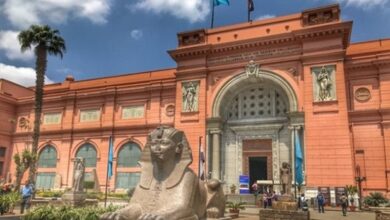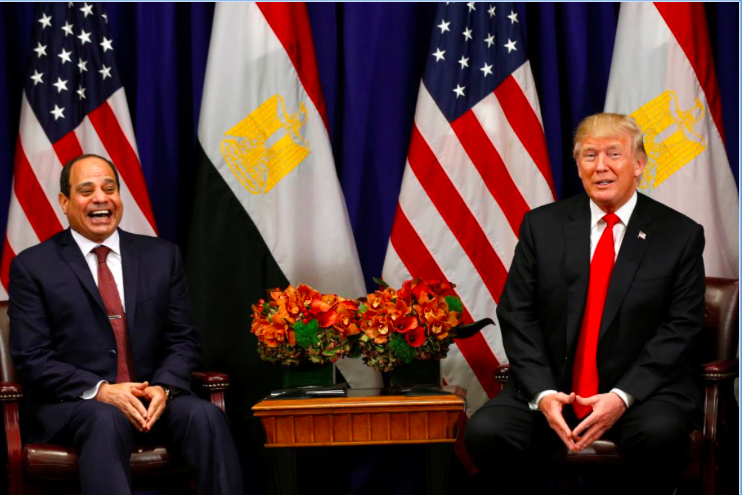Twenty years ago, the French academic Olivier Roy published the book for which he is best known, “L’échec de l’Islam politique”, translated into English as The Failure of Political Islam. The title may sound comical today in the midst of the political upheaval we are witnessing, but, at the time of publication, one could make a considerable case to the effect that the Islamist project had failed. After all, back in 1992, Hosni Mubarak had managed to stave off the potential Islamist takeover of the state that had generated so much fear when Khaled al-Islambouli assassinated former President Anwar Sadat on behalf of Islamic Jihad.
The idea which animated Roy’s work was a fairly straightforward one — that Islamism as a political doctrine, as set forth in the works of such ideologues as Sayyid Qutb, had failed. That is, Islamists had failed to realize their objective of an Islamic state — a state that defied the nation-state order developed in the wake of the First World War. In short, as Roy famously noted at the time, “Political Islam does not pass the test of power.” While Islamist ideologues dreamt of a state that could reach beyond national boundaries and attract the loyalty of Muslims irrespective of their citizenship, Islamist activists, having failed to seize a nation-state apparatus anywhere but Iran, were reduced to seeking bans on alcohol and the spread of the hijab.
For Roy, the failure of this explicitly political, ideologically-driven Islamism meant that the movement as a whole had failed. The shift in focus away from the explicitly political realm, to the realm of the social and cultural — the realm of drink and dress — was emblematic of this failure.
I would suggest, by way of contrast, that Islamists could not have adopted a better strategy than to focus on that social and cultural realm. In the 20 years since the publication of Roy’s book, Islamists have subtly, strategically, and very steadily expanded their hegemony in the social and cultural spheres — and it is the triumph in these spheres that has made their recent triumph in the political sphere possible.
Seen in this light, President Mohamed Morsy’s rise to power is merely the culmination of a process that has been ongoing for years, arguably decades. The Freedom and Justice Party may have seized formal power only last year, but the Islamists took over years ago. And, if the liberal and secular forces that are now frantically seeking a political formula with which to challenge the Islamists fail to grasp this, they may remain relegated to the sidelines of Egyptian politics for a generation.
The milestones in this Islamist struggle for the Egyptian social and cultural spheres are well known — among them, the assassination of Farag Foda in 1992, the stabbing of Naguib Mahfouz in 1994, and the hisba case that forced Nasr Hamid Abu Zayd into exile in 1995. But these are only the most prominent markers of this process of ‘Islamization,’ the rise of al-tayar al-Islami or the “Islamic trend.” One must not forget the less prominent but no less important markers of the process — the stardom of televangelists like Amr Khaled, the development of conglomerates entirely focused on the development of “Islamic media,” and the contraction of public space within which Egyptians of different faiths can come together.
What was so captivating and exhilarating about Tahrir, and the comparable sit-ins across the country inspired by the revolution, is that they were public spaces in which dialogue across faiths, across generations, and across ideologies was not only possible but promoted. Indeed, what came across so powerfully from the multitude of images and videos taken during those 18 days in January and February 2011 was the pluralism of the demonstrations. As Egyptians from all walks of life came together to protest the status quo and debate the country’s future, there was an explosion of creativity from which art, music, and poetry flowed. This is what I called the cultural project of the revolution in my last column, and to my mind, this is the most important challenge to Islamist hegemony that liberals and secularists can mount.
In advocating for this cultural project of the revolution as a response to Islamist hegemony, one question invariably emerges: Heading into the future, what might this cultural project look like? What are the contours of this cultural project as contrasted with those of the ‘Islamic trend,’ for instance?
The question is a difficult one, because the aim is not to set limits but to press them. But if there is one lesson that Tahrir as an experience forcefully delivered, it is that Egypt is in desperate need of public spaces for dialogue. And the need is both literal and metaphorical. In a city like Cairo, where daily struggles for survival are so intense, the sit-in at Tahrir represented not only an opportunity to communicate, but to decompress.
In metaphorical terms, the need for public space is just as great, if not greater. As Mohamed Elshahed, Hussein Omar, and Jessica Winegar have variously explained, the cultural institutions of the state have long remained hobbled not only by bureaucratic infighting and waste, but more dangerously, by remarkably narrow conceptions of what ‘culture’ includes and excludes. In these circles, ‘culture’ has long remained beyond the reach of the vast majority of Egyptians. That these institutions are in various cases led by avowed liberals and secularists reveals that the struggle for a public space for dialogue is not so much one between Islamists and their non-Islamist rivals. Rather, the struggle is between those for whom culture is the rarefied preserve of a select few, and those for whom culture is the contested property of all.
Paul Sedra is an associate professor of history at Simon Fraser University in British Columbia, Canada
This article was originally published in Egypt Independent’s weekly print edition.




